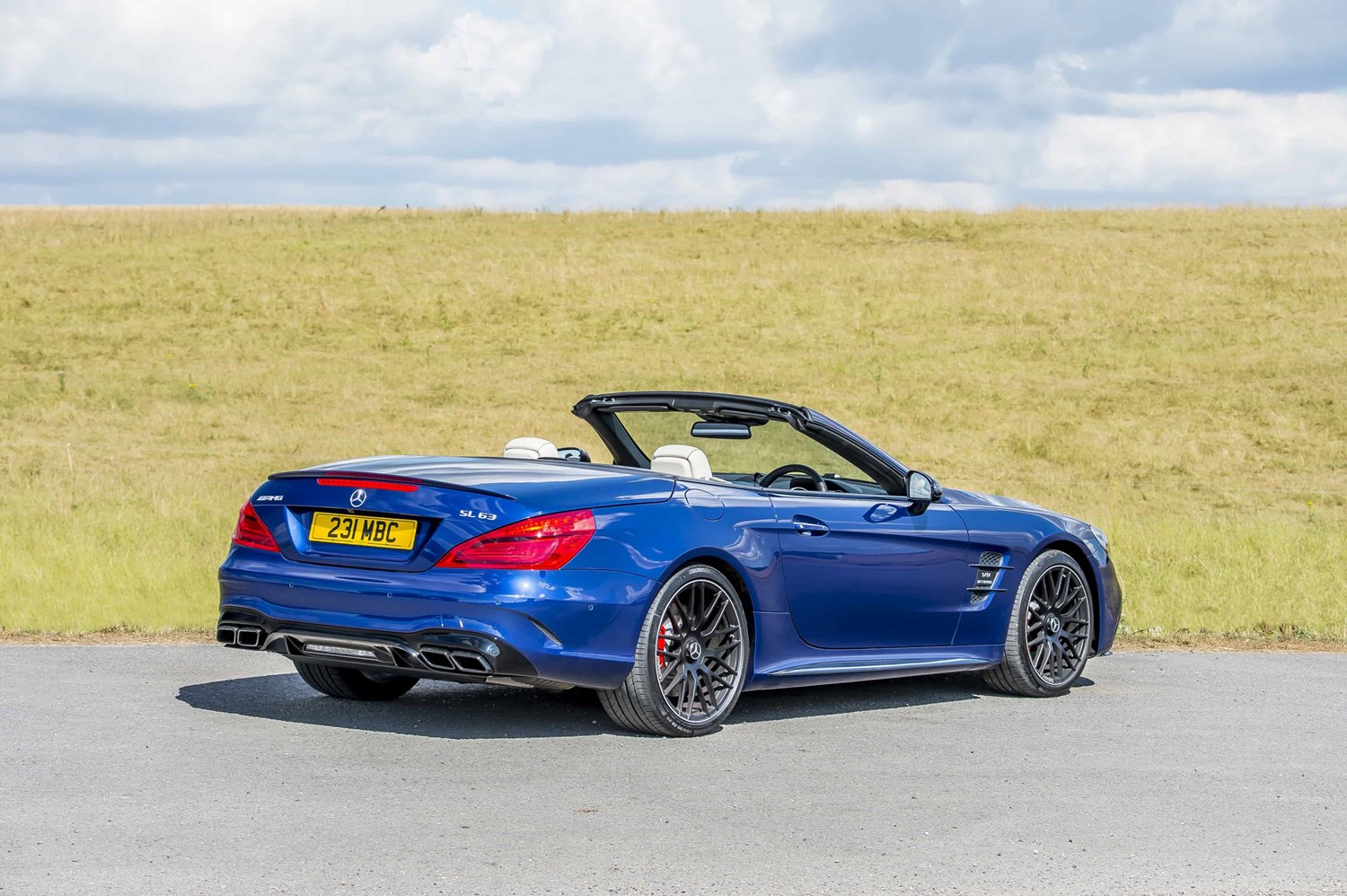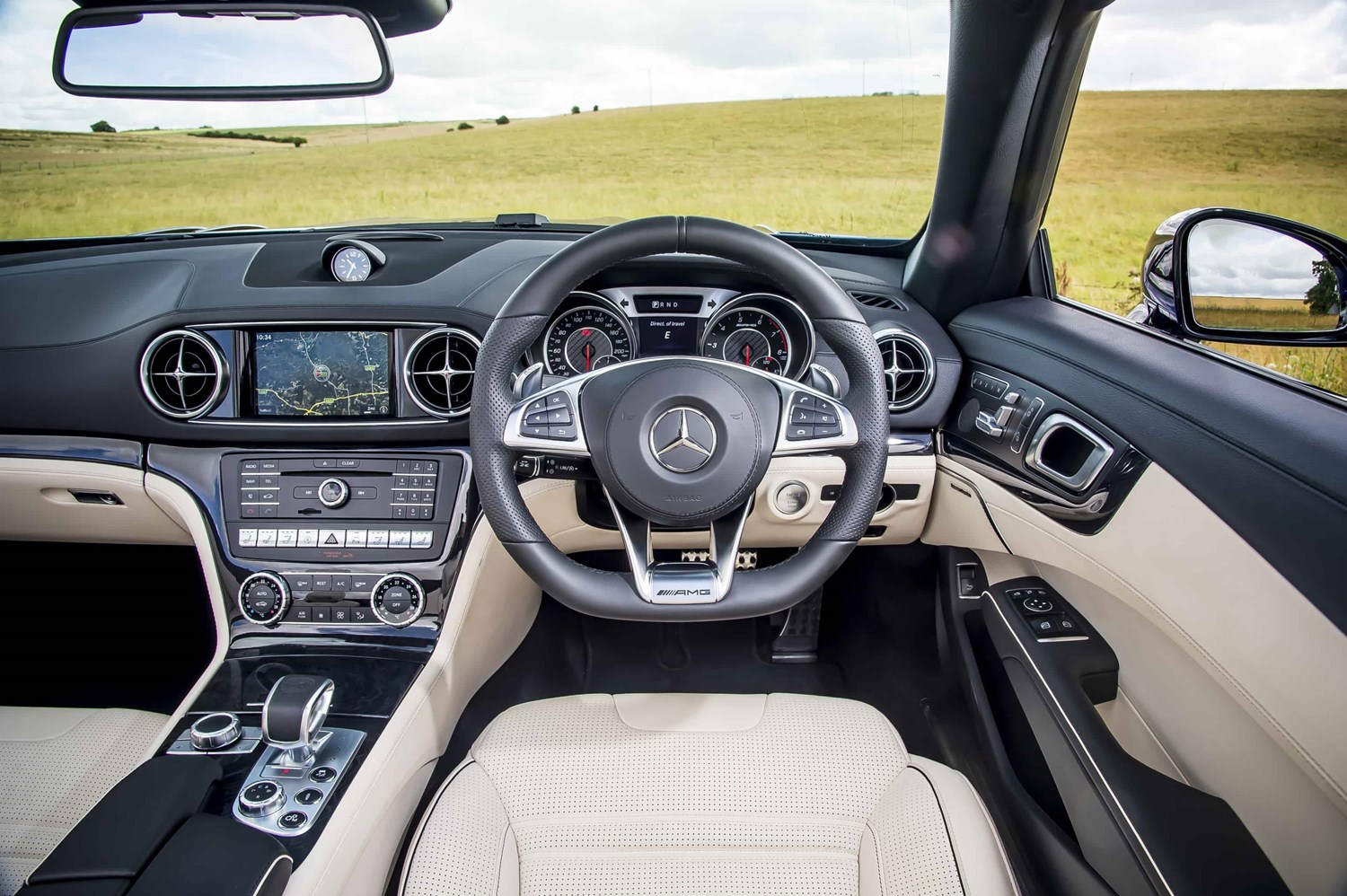Latest Model
The latest generation model is starting to show its age a little now. First launched in 2012, it was the first SL to be built almost entirely of aluminium, making it much lighter than the previous version.
It received a mid-life facelift in 2016, with revisions to the engine line-up as well as a number of cosmetic changes. These include new headlamps, and a new grille, side vents and bumpers front and rear to fall in line with other models in the Mercedes line-up.
Despite being badged ‘sports lightweight’, the latest generation model still weighs in at close to two tonnes, but just because it’s not as small or light as you may expect a ‘sports car’ to be, don’t think it isn’t backed up when it comes to performance. In fact it’s a serious consideration if you’re in the market for a luxury sports car, and offers serious competition to the likes of the BMW 6 Series Convertible and Jaguar F-Type roadster.
There are four options to choose from, including an ‘entry-level’ 3.0-litre V6 right through to a heart-stoppingly quick V12 AMG 65.
Value for money
The SL isn’t cheap with prices starting at £79,965. The one comfort though is that you shouldn’t need to tick many option boxes, as it comes equipped with pretty much everything you’ll need for both performance and comfort.
The ‘entry-level’ model comes armed with satellite-navigation, DAB radio, parking sensors, dual-zone climate control and a heater that blows warm air to your neck, should you decide to pop the roof down on a cold, crisp morning.
It pretty much matches most of the competition pound-for-pound, the only thing we’d say is that the infotainment system is a bit dated now, and is starting to show its age alongside more modern offerings from its rivals.
But it is a superb buy, thanks to heavy-hitting depreciation. The cheapest of the latest generation models are available for as little as £17,000, which buys an SL350 with around 80,000 miles on the clock. Spend nearer to £20,000 if you want a lower mileage version. Facelifted versions also offer great value for money, with these starting from just £30,000. But the best savings are to be had on nearly-new models, with a one-year-old example for under £50,000 – a frankly giant £30,000 saving off the list price.
Looks and image
The SL was last facelifted in 2016, and while very little was changed underneath, there were quite a few cosmetic changes to bring the SL in line with other models in the Mercedes line-up.
The biggest visual updates included a revised front end, which saw a new front grille and side vents behind the wheels, plus adaptive LED front headlights with daytime running lights.
Overall, the SL does an amazing job of managing to look sleek and elegant, as well as being a true sports car. Obviously, as you’d expect for any model with an AMG badge on the back, the high-end performance versions get more sporty features like larger alloy wheels, a sportier aero kit and a bolder stance on the road.





